Gokigenyo! High-Society Greetings
Thank you very much to the guests who participated in the tour of the day. On that day we hosted 8 people from USA, Canada and UK.
It was a cloudy and cold morning so a roasted sweet potato sold near the entrance of Meiji Jingu Shrine could taste very nice. Sweet, sweet potato roasted on the stone oven is traditional Japanese commoners’ food which you can bite on the street without folks and knives like hamburgers.
It is a great contrast with the imperial shrine, where the ultimate high-society people are enshrined.
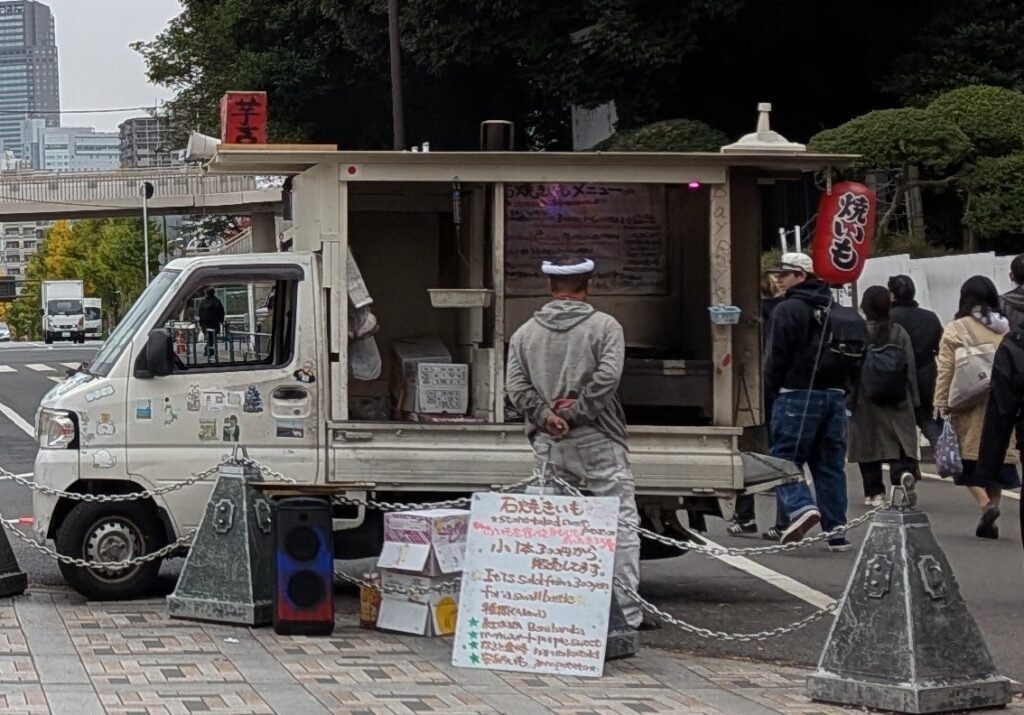
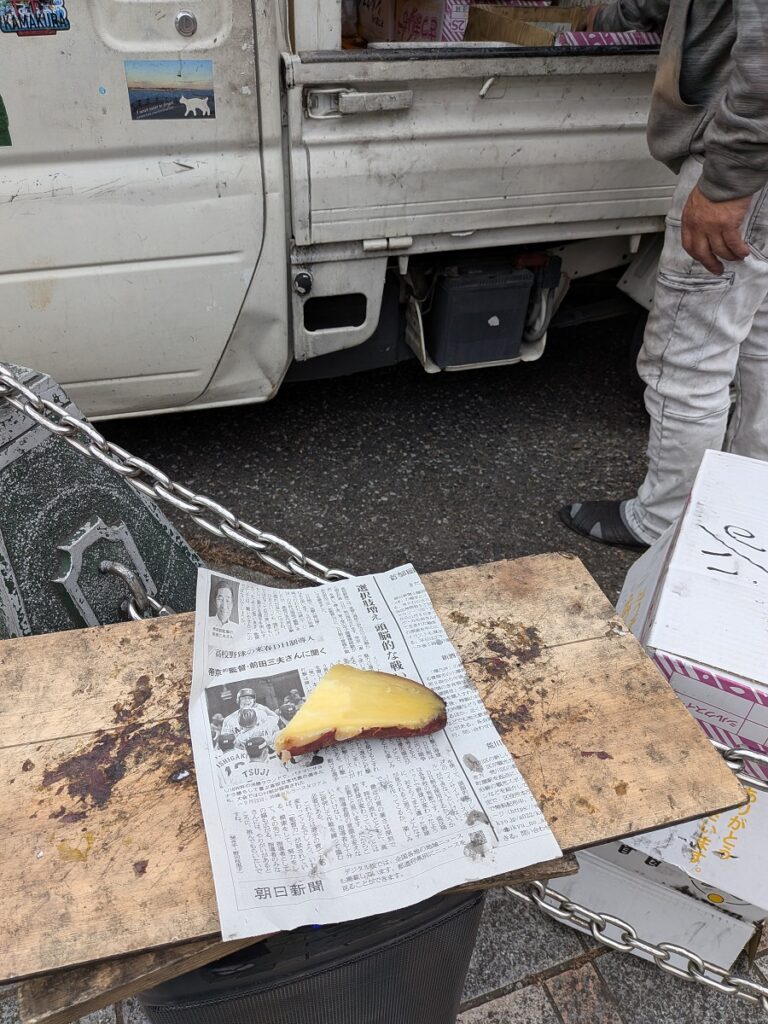
We hope all of the guests enjoyed the tours and conversation with the guides. As promised photos taken during the tour are posted on this page to recall the fun memories we shared.

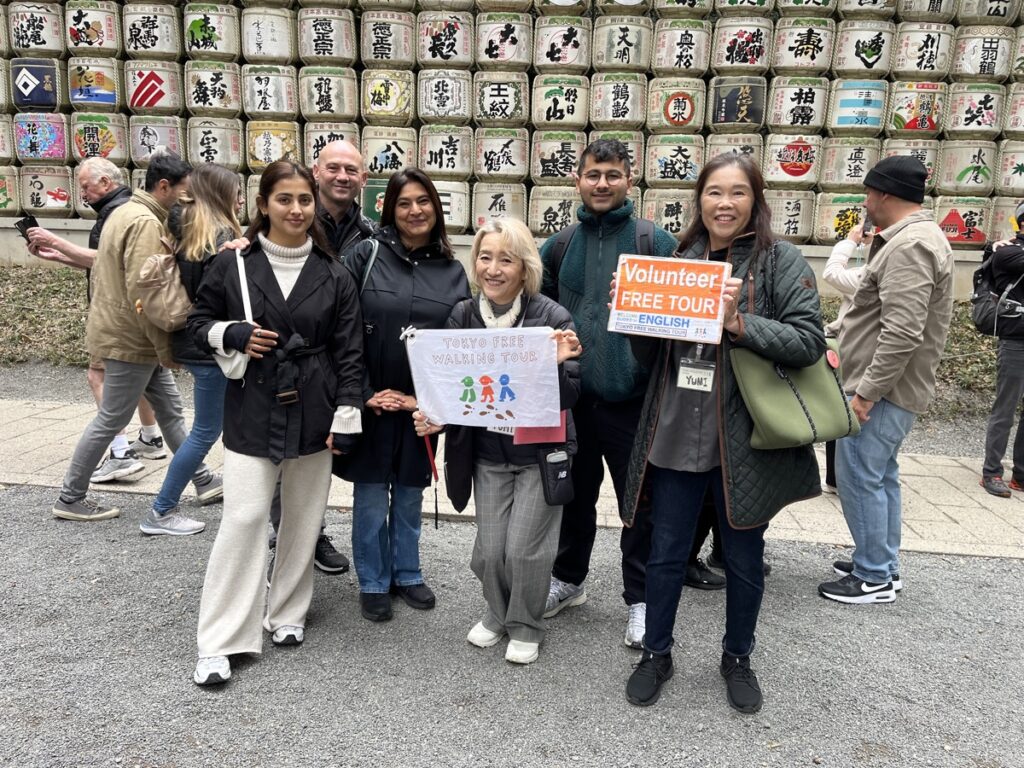
On that day we were lucky to encounter a traditional wedding procession at the main pavilion as well as chrysanthemum exhibition on the corridor.
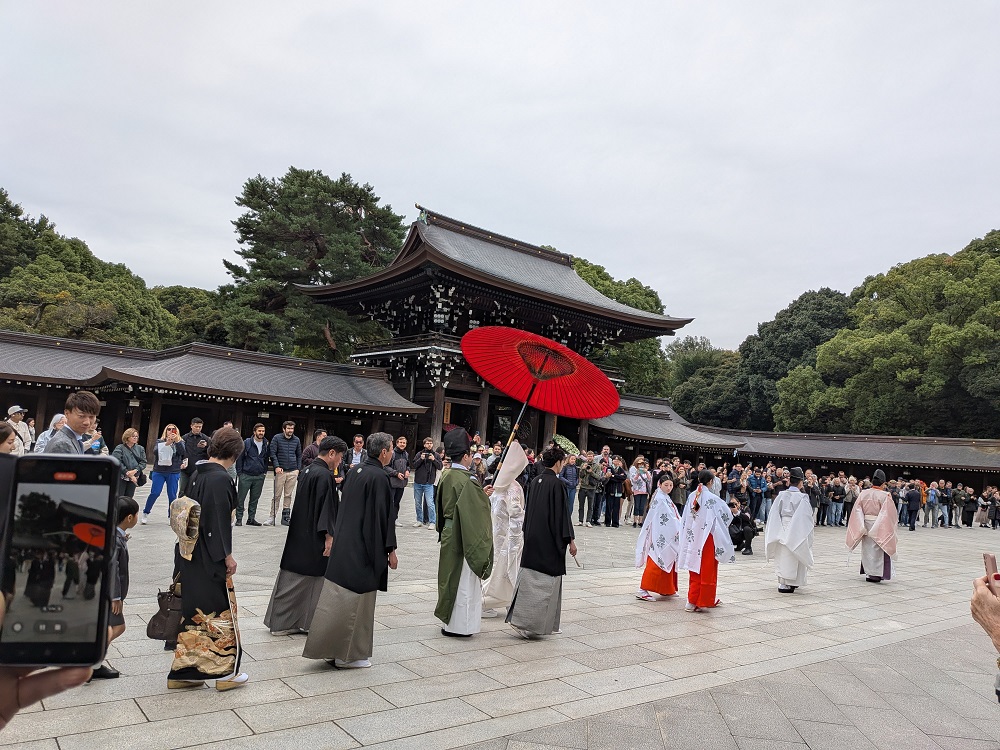
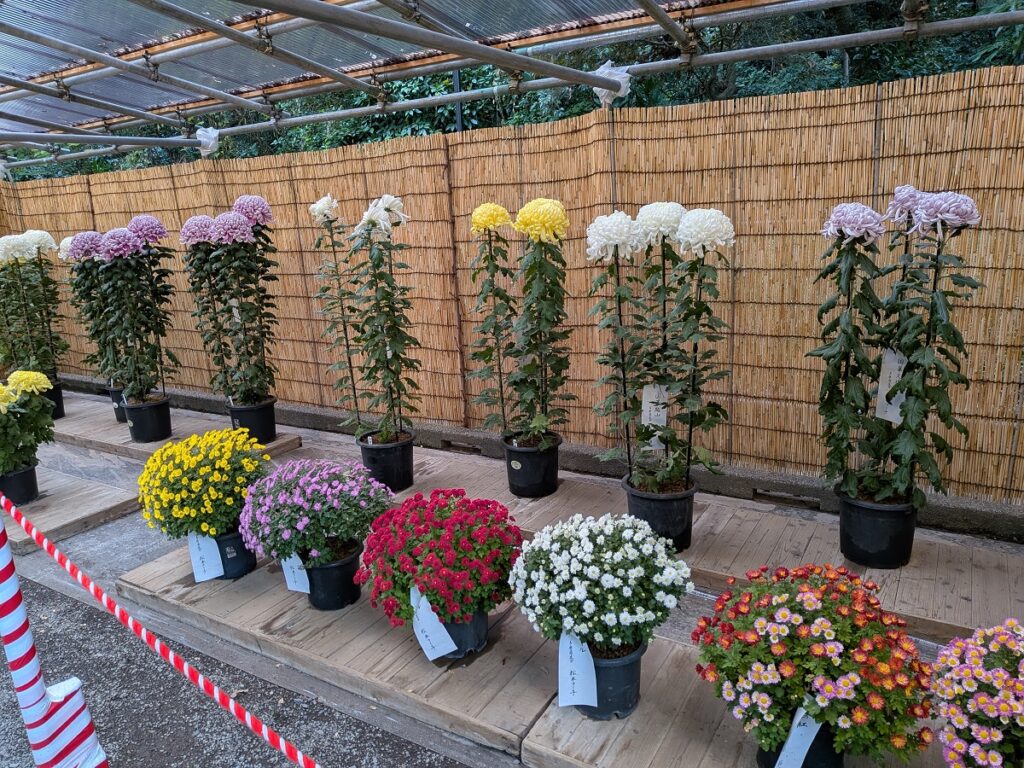
The chrysanthemum flowers are symbols of the imperial family and are pasted on the torii gates within the shrine premises.

As already described, the feature of the tour is to experience the contrast between gracious and noble scenery of the shrine and fashionable town of Harajuku.


There you can experience very common and fancy sweets such as crepes, cotton candies as well as attending tea ceremony, which consists of very formal manners to have matcha green tea and sweets. The tea ceremony manner is considered part of high-society’s education.
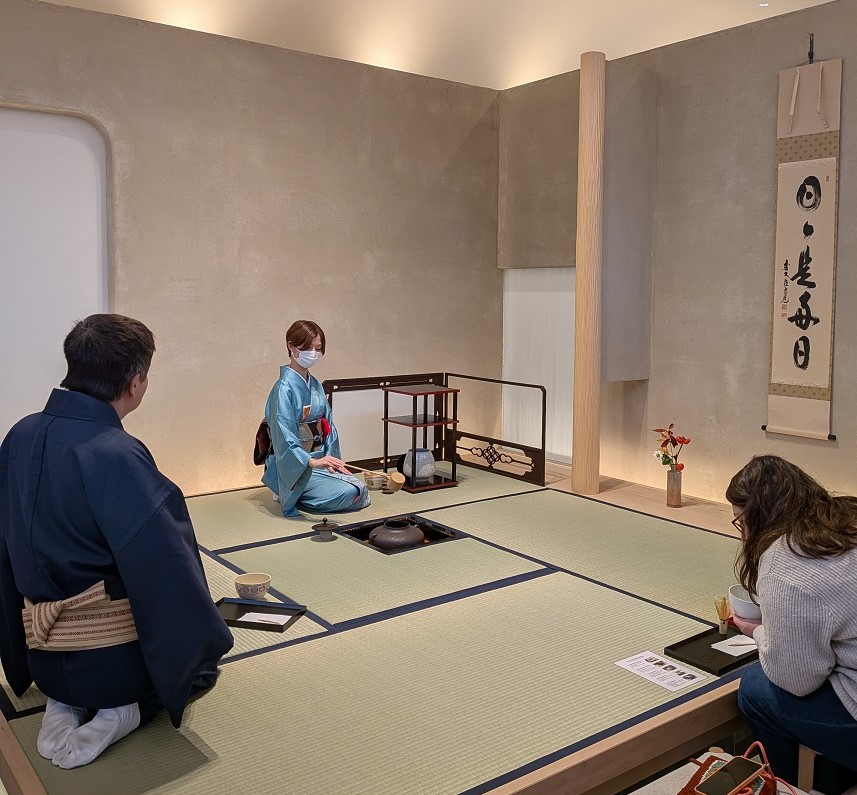
In the feudal period Japan had hierarchy system that divide people mainly into 4 ranks such as Samurai, Farmers, Craftsmen, and Merchants. The imperial family members were above all the ranks of people.
In the late 19th century when Japan acquired western modern Monarchy and Parliament system, these four ranks were abolished. But imperial families and high ranking Samurai people like Provincial lords could retain high-society status. These high-ranking people were given titles like Duke, Marquis, Count, Viscount, and Baron like European peers.
However, after the second world war, the peerage was abolished for democratisation of Japan. The current constitution clearly states that peerage is banned. Imperial family members have still retained the privileged status up until today. Maybe they are the only remaining Japan’s official high-society people.
The peers life struggle before and after the war was often depicted in popular shows as a romance or history themed dramas like “Gone with the Wind.”
One good example was 1988 TV drama “Hana no Arashi (Noble Storm),” in which a peer woman fell in love with a commoner man but they had to apart due to the war and then after the war they met again but her family lost peerage status and almost bankrupt so she got married to another man to revive the glory of her family.
However, her family business after the war failed and then they lost all of the fortune but she and her former lover got together again to establish an orphanage for children who lost their parents because of the war so we can be aware that making all the people happy is more important than retaining privileged status. The drama illustrates the path of Japan between before prewar and post-war period along with the love romance. That is why it was very popular.
Among imperial family members and such peers, they say “Gokigenyo (I hope you are well.)” to greet each other. It is not only used when people meet but to apart. It functions as “Konnichiwa (Hello)” as well as “Sayonara (Good-bye).” In the drama, “Gokigenyo” was used to distinguish them from commoners.
Greetings “Gokigenyo” is still alive at least among imperial family members. So if you have a very fortunate chance to meet with Emperor or other imperial family members. Why not say “Gokigenyo” to Him or Them? They would be very pleased to hear that.
We are pleased to hear that as well so we feel being treated as part of high-society people just as we treat our guests as the most valuable people for us.
Thank you again and Gokigenyo!
To our guest on November 13th – we’d love to hear your feedback!
We would appreciate it if you could leave your comments possibly with names of the guides you were with, on Tripadvisor or our Instagram/Facebook pages.
If you want more info about our tour, check out our website, Facebook, or “Tokyo Free Walking Tour” on Tripadvisor.
(Posted by Masa Y.)
